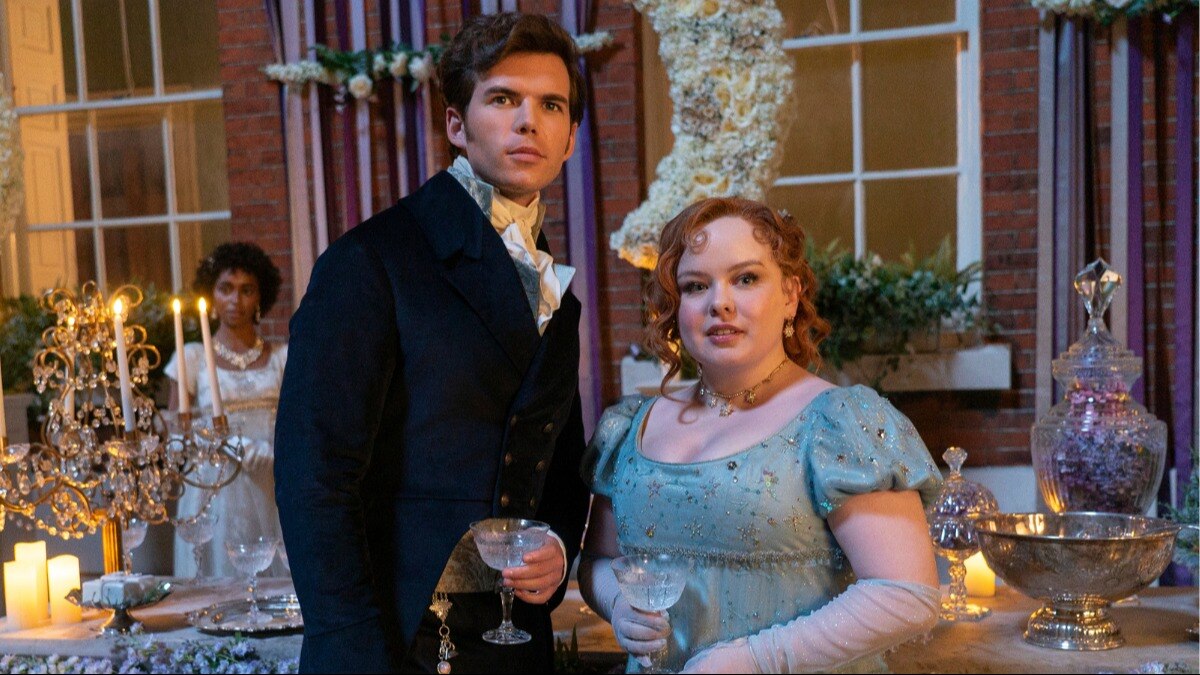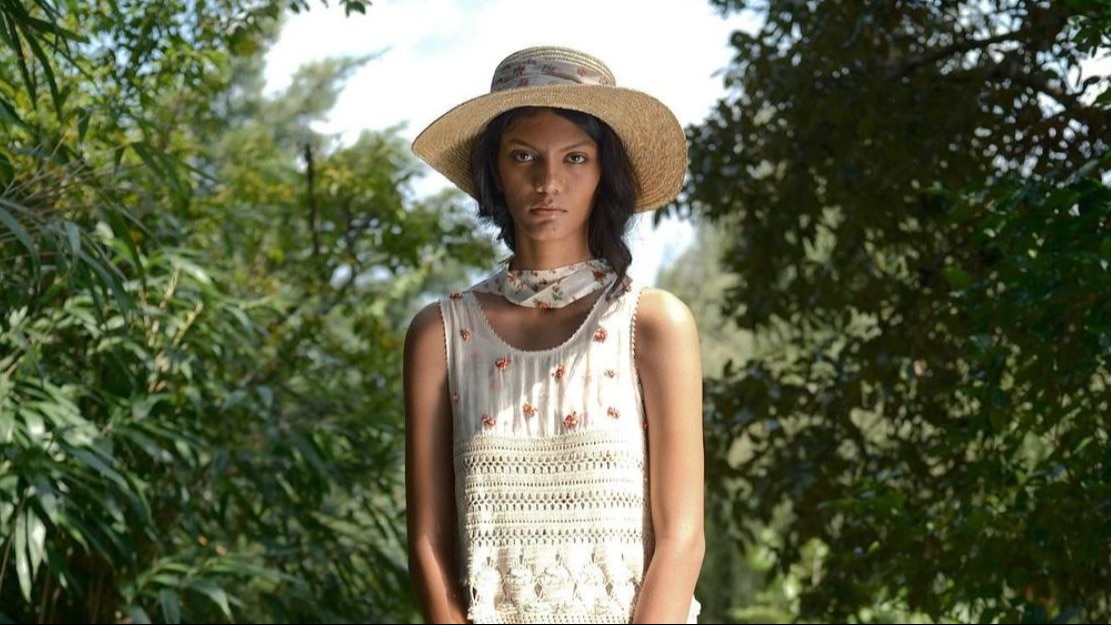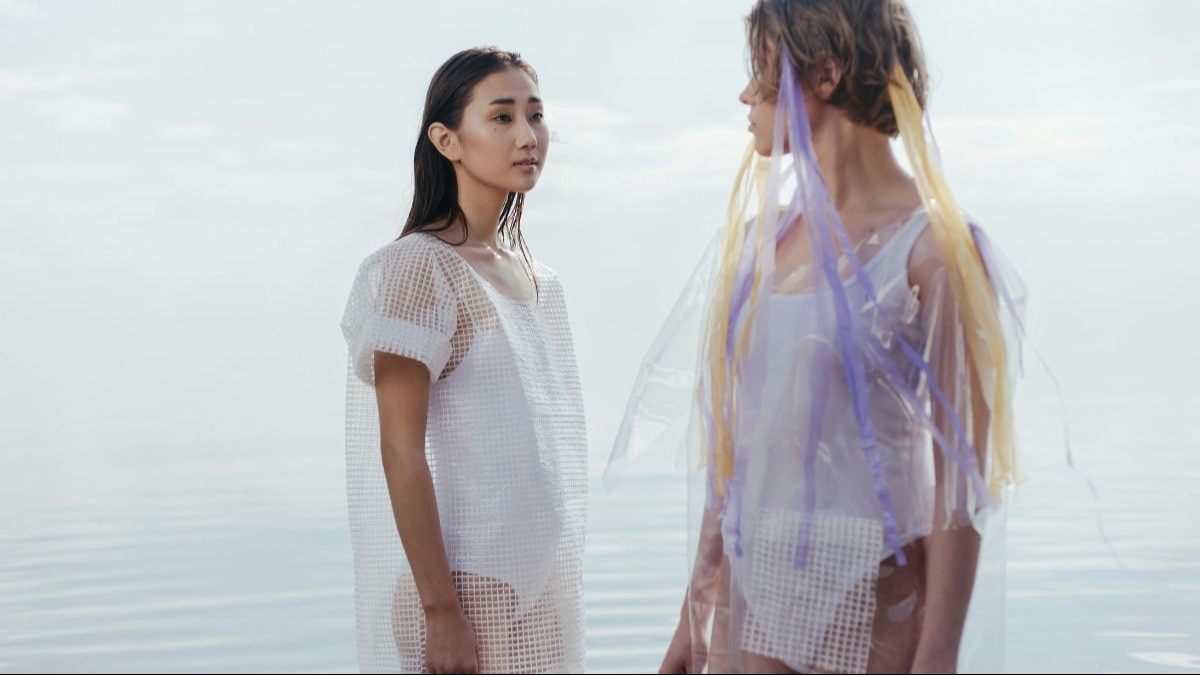
How two women are making the art world more equitable through tech
Friends and entrepreneurs Charlie Jarvis and Jordan Huelskamp discuss launching blockchain-driven companies to support and revolutionize the art world.


While the recent collapse of the crypto landscape and subsequent NFT market crash have stoked widespread apprehension about the future of blockchain-driven technology, Jordan Huelskamp and Charlie Jarvis believe it’s the key to making the art world more equitable and transparent. The two entrepreneurs, who met as students at Stanford University, have each launched a digital platform that aims to revolutionize the art market in its own right, relying on tech to reform the sales and acquisitions processes for both artists and collectors alike.
With Salon, the world’s first decentralized art fund, Huelskamp has developed an accessible, community-driven approach to financing and managing an art collection. Not only are pieces selected for procurement based on a democratic voting system participated in by Salon's members, but, unlike with traditional collections, acquired works are displayed in members' homes to be enjoyed rather than stashed away in storage or behind the walls of a museum. Jarvis' venture, a platform called Fairchain, uses the blockchain to create certificates of authenticity and title for artworks and also generates sales contracts that help artists collect royalties every time one of their pieces is resold. With advisors including artists like Laurie Simmons and Hank Willis Thomas, the platform is set to reorganize the secondary art market by putting the interests of creators first.
When enrolling at Stanford, where they briefly lived in the same house, Huelskamp and Jarvis didn’t foresee themselves working in art. Huelskamp pursued a small liberal arts major called American Studies, which combined English, art history, and political science, but it wasn’t until she did a fellowship on the land art movement and the American Southwest during the 1970s that she began to seriously consider a career within the space. After graduation, she got her master’s in journalism from Columbia University, where she focused on arts criticism, and went on to become the head of social and visual merchandising at online art marketplace Artsy—a role she still holds today. One year ago, in January of 2022, Huelskamp launched Salon on the side. Meanwhile, Jarvis, who majored in computer science, cofounded Fairchain in 2019 while still a student at Stanford; she moved to New York City after graduating later that year to focus on building the platform full-time.
Over Zoom, Harper’s Bazaar speaks with Huelskamp and Jarvis about navigating entrepreneurship together as friends, their respective endeavors, and why blockchain is the most effective—and equitable—mechanism to move the art world forward.
HB: To start, can each of you describe in your own words what Salon and Fairchain are all about?

Jordan Huelskamp: Salon is a decentralized contemporary art collection. We are owned and managed by a global community of collectors, artists, gallerists, and art professionals. We’re an Internet-based institution, and we’re building the world’s largest co-owned art collection. And importantly, we have works on display throughout the homes for members around the world, rather than being shoved away in storage, which is a very important founding values component for us.
The next question is usually, What does decentralized mean? For us, decentralization means that Salon has no owner; we have no leader. All the works in our collection are shared amongst our community, and we pool our funds, our knowledge, and our access, and really rely on our hive mind and the democratic voting process to form consensus on acquisitions and build our collection for the long-term together.

Charlie Jarvis: I describe Fairchain as equitable infrastructure for the art market. What that means is we have a platform that supports the creation of secure digital certificates for artwork confirming title and authenticity, as well as the generation of digital contracts that allow for collectors to be protected against forgeries and disputes. It also allows artists and galleries to benefit from the secondary markets they create. So, we allow for it to be easy for people to get clear titles for their works, then stay connected to those works as they move through the market.
HB: How are those certificates generated and registered to individual works?
CJ: It’s actually super easy. As an artist, you just take a few photos of your work, and then you’re able to immediately create the certificate of title through Fairchain. And when you and your gallery sell the work, we generate a sales contract for you in which the buyer agrees to pay a royalty should they ever resell the work.
If the buyer does resell the work, they just go through our platform and generate a sales contract for the next person. We make sure to collect whatever royalty they agreed to upfront and distribute it right to the account of the artist. The idea is that it’s just a baked-in part of our process of consumption of this form of media.
HB: Why do you think it’s taken so long for visual artists to get royalties on work, whereas musicians have gotten them for so long?
CJ: I think there are a few different reasons. One is that the art market has historically been very slow to adopt technology. During the pandemic, suddenly everybody’s sights turned to blockchain and NFTs. The second reason has to do with the dynamics of what it takes to create a new market standard.
When you think about the fact that every time you watch a movie, the actor gets paid, and every time you listen to a song, the musician’s getting some amount of money, we often just think that that is how it is. But we forget that was not actually a part of the original framework. Actors went on strike and created SAG (the Screen Actors Guild), and now they get residuals when their works are shown, but that hasn’t happened yet in the art market. Our hope with Fairchain is to be that force that really coalesces artists around this incredible cause.
JH: It’s really interesting to think about how the art world’s not just a market for transacting, right? It’s not a perfect buying-and-selling system where there are perfect laws of supply and demand. There’s a very complex social network that’s meshed over the art world and in every single transaction that takes place. So to Charlie’s point, these kinds of royalty mechanisms existed in other parts of the art world, but we’ve lacked a mechanism to really facilitate it in a clean and equitable way, and that’s where blockchain comes in.
There’s a very similar story for Salon. It’s built around the idea of putting a hundred people in a room and telling them, “Hey guys, we have X amount of money to spend; what art should we buy?” That sounds like pure and utter chaos and lawlessness, but when you have the breakthrough of the group investment model that’s facilitated by blockchain, it becomes an extremely clean democratic utopic system.
HB: When blockchain is brought up in the same breath as visual arts, it can often be divisive; some people are excited about their intersection, while others aren’t. Have you encountered the latter reaction, and how do you encourage people to change their minds and embrace it?
CJ: The vision that we’re selling people on, and that people are excited by, doesn’t necessarily have anything to do with blockchain. It has to do with the real-world impact and the effect it has on people’s lives and their ability to engage within the art world. So, for Jordan, it’s like, what does it look like to make it seamless for collectors to get together and buy works together? And then, for us at Fairchain, what does it mean for someone to move away from a current system of sending paper contracts and tracking movement via Excel sheets to something that is easier?
When we go out and talk to artists or galleries, it’s not necessarily that they’re really excited about using blockchain and about the vacuum; they’re really excited about being able to achieve and realize these goals. And ultimately, the technology is the way that we do it.
JH: Because we’re using blockchain now, there’s a tendency for people to say, “Oh, that’s the blockchain-based artist royalty,” or, “That’s a blockchain-based art fund company.” But I think that in 10 years, we’re going to look back and we’re going to laugh, because blockchain really is just another technology. Right now, we’re at the forefront of using it, but I do think it is going to disappear behind the user interfaces that we all are interacting with every day.
HB: Jordan, who is the ideal community member for Salon?
JH: Everybody who’s in Salon now has a history with art and a history or interest in collecting. We have an artist, we have gallerists, we have professionals from all walks. We really represent a wide cross section of the art market. And I hope to continue to see that level of diversity as we grow in scale. Underlying everybody’s unique perspectives, we all have a strong and demonstrated commitment to ethical collecting practices. That’s extremely important to us, because Salon really is amassing a collection for the long-term; we have to hold this thing for decades.
HB: How does the process of deciding which works to buy pan out?
JH: Everybody in our collective is expected to and can bring forward proposals for which works we want to collect, and they do that via our app. To make a proposal, you fill out basic information about the artwork, you provide images of the artwork, and then you really make your case. We have you write about the artist’s market, including their exhibition history, their auction results, and if they had a piece that was recently acquired by a major institution or private collection.
And then, second, why does this artist belong in our collection? Why does this artist move you? Why should we support them over thousands of other artists? When you submit your proposal, it kicks off a four-day voting period where everyone can go in and cast yes or no. We use a blind voting system to try to mitigate group think.
If we decide to collect that work, we have a committee that’s responsible for the logistics of the collection and has the keys to our bank account. And then, after that, we have a priority system to decide who gets to take the work home, so if you originally propose the work, you have right of first refusal. If you already have a work at home or you don’t want to take it home, we go down the list in the order people joined Salon and do that until everyone has one work, two works, three works.
HB: How do you ensure that Salon invests in a diverse range of works and supports artists from all genres and locales?
JH: That’s super important to us. We have curatorial guidelines that we passed as a community that guide us on diversity in terms of artist identity, mediums, genres, practice type. We want a cross section of the art world that reflects the values of our community. And the really cool thing is that everybody comes in with a different perspective. I’m really plugged into the abstract market. We have somebody who’s very plugged into fabricated sculpture. We have someone who’s super plugged into the emerging arts scene in Mexico. So together, we can mitigate some unconscious bias that we bring personally as collectors. The collection that we’re going to build looks so much different than the collection that we would build alone, and that’s where the real magic is.
HB: Not only are you both entrepreneurs working within the same space, but you’re also longtime friends. How is it having one another to go to for advice or input?
JH: I’m constantly texting and calling Charlie, like, “Hey, can you introduce me to this person?” Or, “What do you think about this person as a potential member for Salon?” Or, “What do you think about that opening?” It’s nonstop. You really can’t get that perspective on the contemporary art market in school. So, even though I might have had a little bit of art history background in college, you really learn what is happening in the market today on the job. And Charlie has the same level of expertise today that I do because of that. I don’t know of anyone who’s at more openings than Charlie.
CJ: I had such a quick immersion into the art world, and a lot of my close friends now are artists in New York. Within the art world, Jordan and I share the special connection of being on the tech side of things. Because I came into this as my first job, there are so many things I just don’t know and I’m constantly interviewing people for information. I’ve taken Jordan on multiple coffees, being like, “Tell me everything you know.” It’s always nice to have other people who have resources and who are thinking about organizations that are similarly structured outside of a gallery or a studio. It’s really cool having someone else who is diving headfirst into the art world to compare ideas and insights with. That’s always valuable.
HB: Charlie, you’ve also established the Fairchain Fund for Working Artists. Tell me a little bit about what it is, how it is funded, and who the money goes to?
CJ: It is a nonprofit 501(c)(3) fund; a portion of the transactions on the secondary market of works that are backed by Fairchain can be directed towards this fund, which supports all working artists. The idea is really that we can create a mechanism around effortless philanthropy. A mechanism by which there’s support for the greater artistic community beyond just the artist whose work you might be buying, baked into every transaction. And that’s really our vision, the idea that we’re able to create a framework that supports the artistic community as broadly as possible.
JH: At the end of the day, what are we all doing here? We’re trying to grow the art market; we’re trying to engage new participants. What happens when we grow the market? We have more art being made. We have more art being sought; we have more art being bought. That means that we have more working artists in the world that are able to do what they love for a living, and that’s really what moves me so much.
I think once Salon really attains its peak, and we have that collection under our belt, people will know us as a cultural tastemaker. And there’s a really beautiful thing that happens in the art world. When a cultural tastemaker—usually a private collector or a museum—collects a work by an artist that’s at that emerging or mid-career stage, it could be a total game changer for that artist. It could be the difference between them having a side hustle as a waiter at night and creating art full-time.
This piece originally appeared in Harper's Bazaar US









